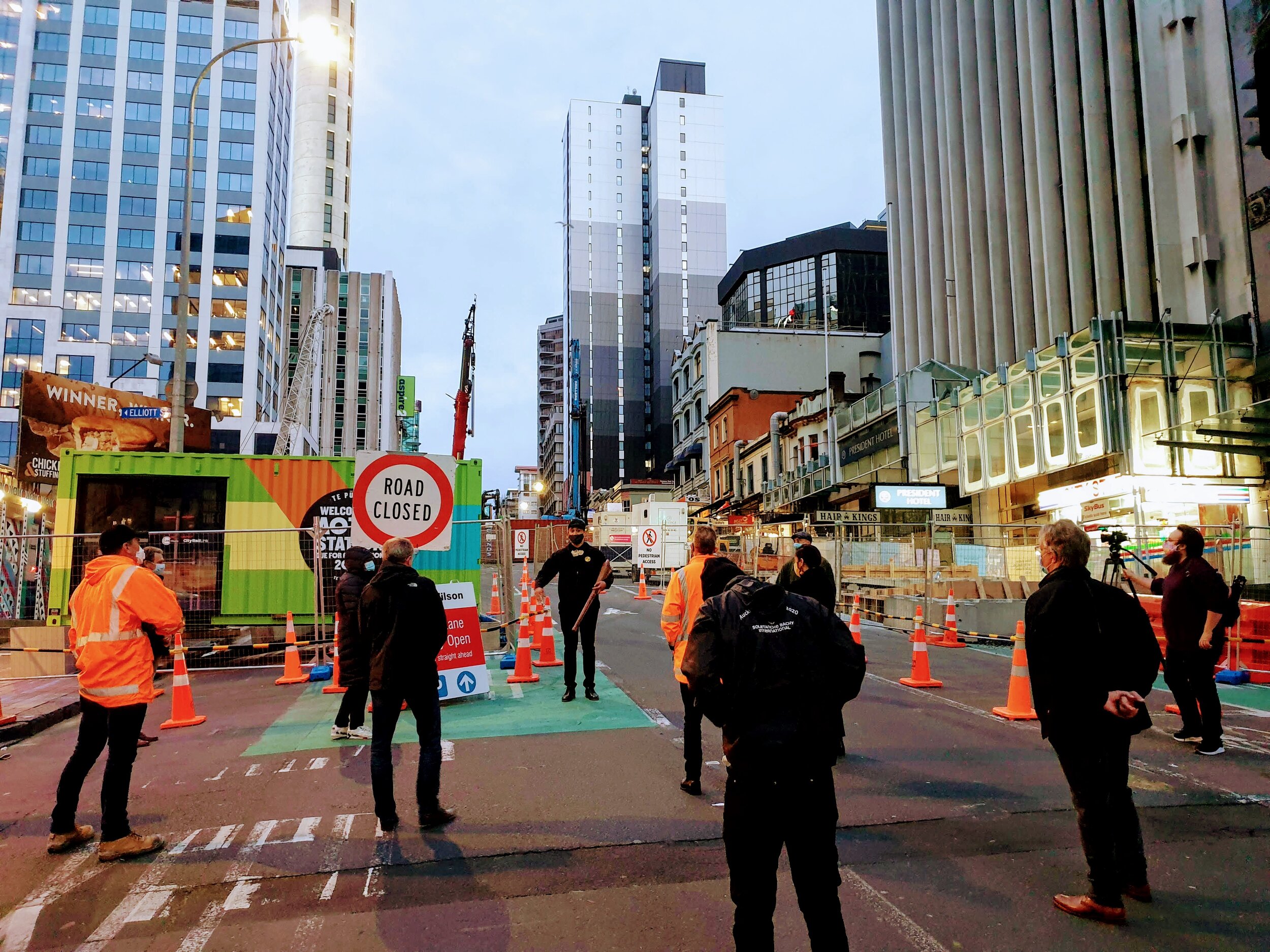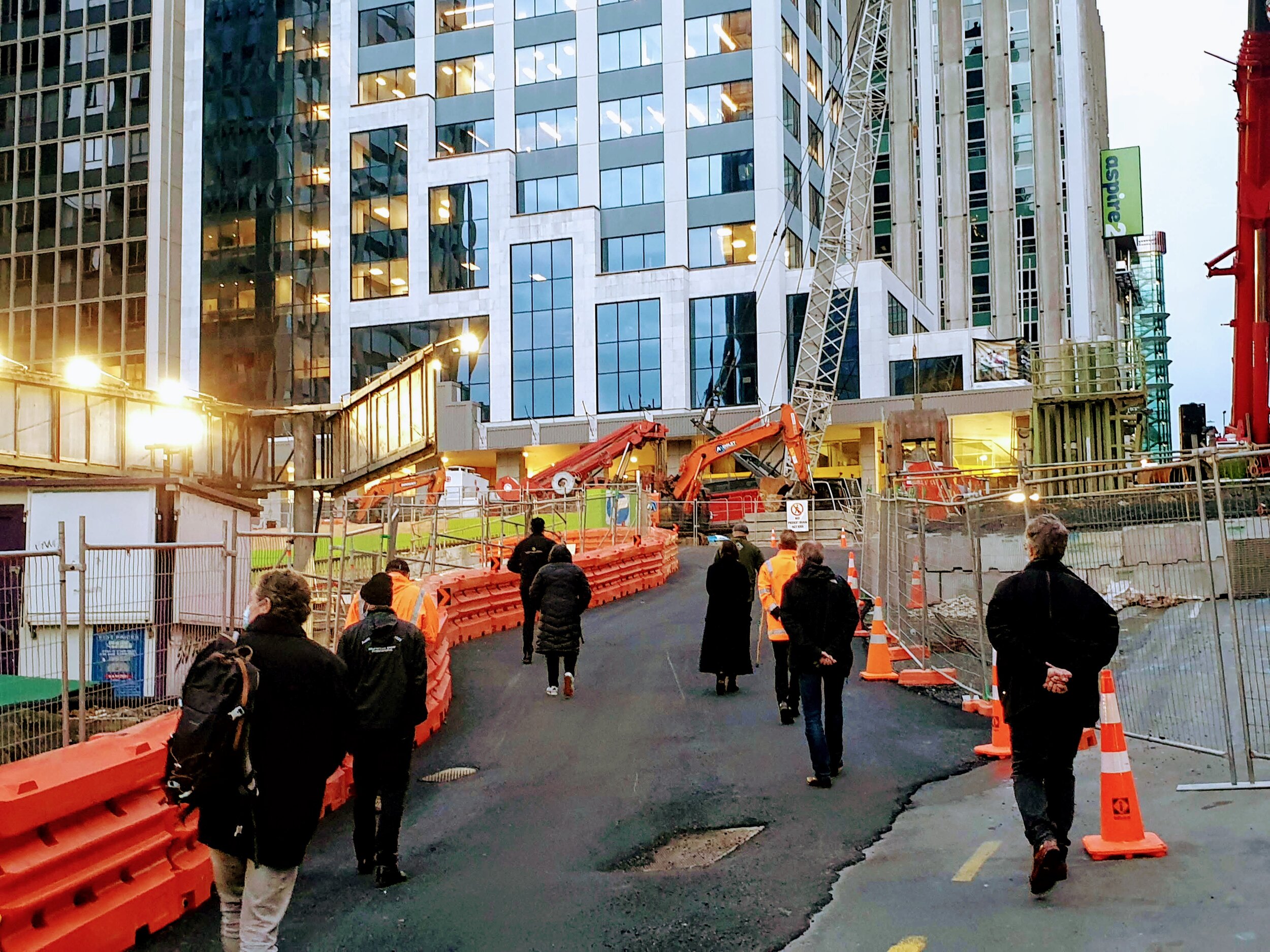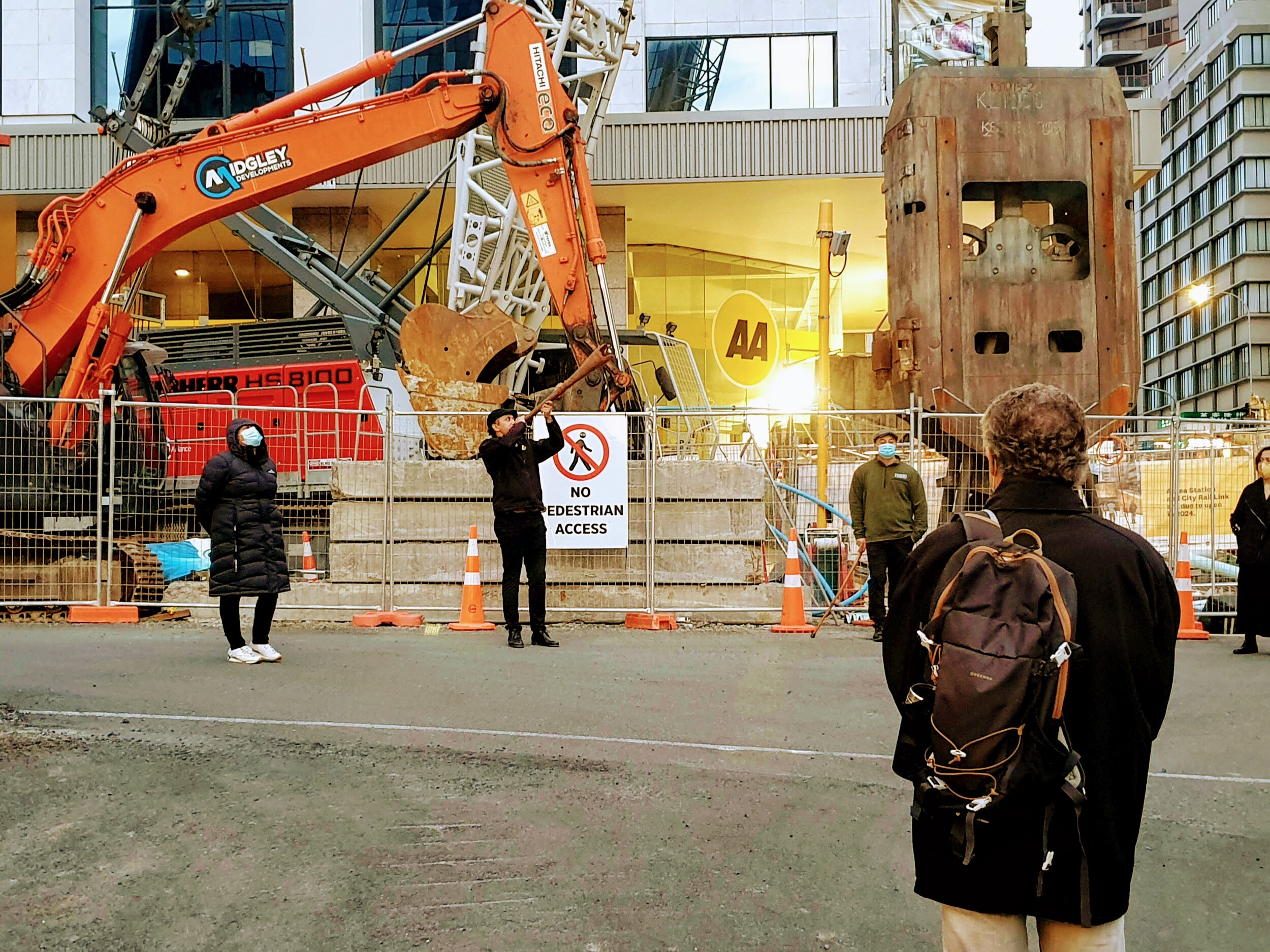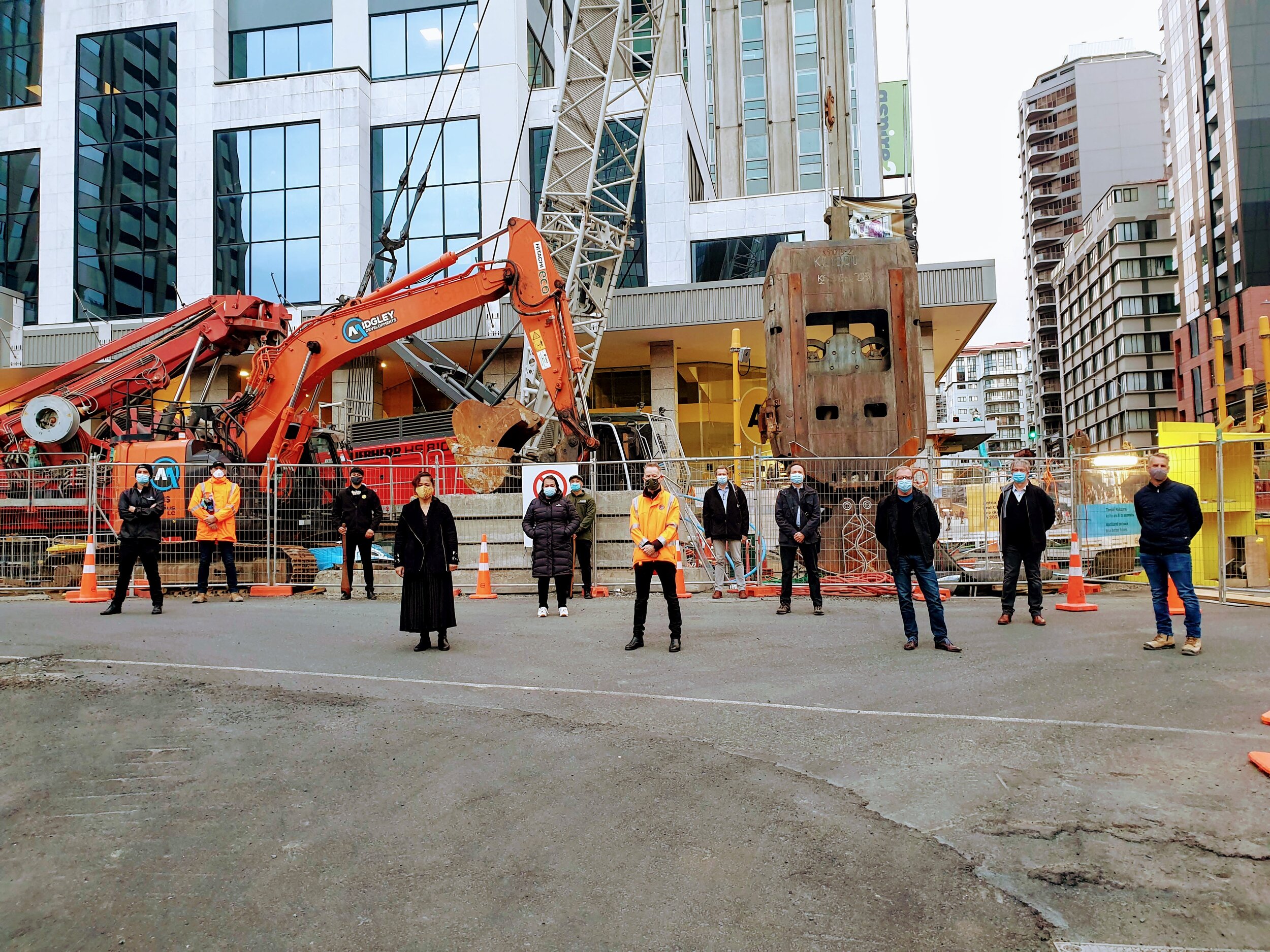Back to Work
After five weeks in Alert Level 4 lockdown, the City Rail Link (CRL) workforce has sprung back into action on site with the announcement of Auckland’s move to Alert Level 3.
All sites along country’s largest transport infrastructure project – Mt Eden, Karangahape, Aotea and Britomart stations reopened on Wednesday 22 September 2021.
“We’re an important part of the New Zealand economy with our big workforce and our big spend locally on construction materials so we’re keen to get cracking again. That’s good news for Auckland and good news for New Zealand,” said Dr Sean Sweeney, CRL Chief Executive.




On the morning of the reopening, representatives from Ngāti Whātua Ōrākei and Ngāti Te Ata Waiohua led a karanga and karakia at the Aotea site to bless the resumption of construction work at Covid-19 Alert Level 3.
.The occasion was held entirely outdoors and mask use and physical distancing was in place.
An immediate priority was placed on ensuring the safety of workers and the wider community. Enhanced health and safety protocols were reimplemented including physical distancing, health monitoring, cleaning, segregation between different work crews and wearing personal protective equipment including masks.
Around 750 workers returned to CRL sites under Alert Level 3. Office-based support teams continue to keep the wheels turning from home during Alert Level 3.
CRL spent Alert Level 4 preparing for a quick return to construction, around 100 workers remained on site during the lockdown providing security, maintaining plant and other equipment, and operating the project’s tunnel boring machine well below full capacity levels to prevent earth settling around it.
Dr Sweeney acknowledged the impact that the current lockdown will have on the project.
“Current covid-related impacts, and those before, are of a scale and uncertainty we could not have reasonably predicted a couple of years ago. They are exceptionally hard to rigorously quantify and will not be able to be fully determined for some time yet. But it is highly likely there will be significant consequences for the project,” Dr Sweeney said.

